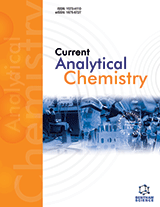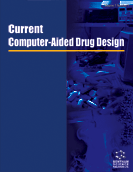摘要
质子泵抑制剂(PPIs),如奥美拉唑,兰索拉唑和雷贝拉唑,用于治疗胃食管反流病和消化性溃疡病。 PPIs的使用增加了,特别是在老年人中,药物流行病学研究表明在80岁以上人群中使用PPI峰值。在这个人群中,阿尔茨海默病(AD)是一种常见的神经紊乱和痴呆类型,发生频率约为10%。据估计,全世界有超过4500万人患有痴呆症,并且这是老年人死亡的主要原因。最近的临床研究表明,长期使用PPIs可能是痴呆症(包括AD)发病率增加的危险因素。与AD病理生理学有关的潜在分子机制(例如,淀粉样蛋白加工的调节)也已在体外和体内研究中报道。虽然这些结果的临床意义还不确定,但对当前知识的文献回顾对于未来的基础和临床研究很重要。本综述总结了使用PPIs和AD发生率的可能机制。另外,我们总结临床研究的结果以突出对人类的影响。
关键词: 质子泵抑制剂,神经退行性疾病,阿尔茨海默病,分子机制,构效关系,临床研究。
Current Medicinal Chemistry
Title:Is the Use of Proton-pump Inhibitors a Risk Factor for Alzheimer’s Disease? Molecular Mechanisms and Clinical Implications
Volume: 25 Issue: 18
关键词: 质子泵抑制剂,神经退行性疾病,阿尔茨海默病,分子机制,构效关系,临床研究。
摘要: Proton-pump inhibitors (PPIs), such as omeprazole, lansoprazole and rabeprazole, are used for the treatment of gastroesophageal reflux disease and peptic ulcer disease. The use of PPIs has increased, especially in older individuals, and a pharmacoepidemiological study indicated the use of PPIs peaks in people aged 80 years or older. In this population, Alzheimer's disease (AD) is a common neurological disorder and type of dementia, occurring with a frequency of approximately 10%. Currently, over 45 million people are estimated to have dementia worldwide, and it is a major cause of death in the elderly. Recent clinical studies have indicated that chronic use of PPIs can be a risk factor for increased incidence of dementia, including AD. Potential molecular mechanisms related to the pathophysiology of AD (e.g., modulation of amyloid protein processing) have also been reported in both in vitro and in vivo studies. Although the clinical implications of these results are inconclusive, a literature review of the current knowledge is important for future basic and clinical research. This review summarizes the possible mechanisms connecting the use of PPIs and the incidence of AD. Additionally, we summarize results from clinical studies to highlight the influence in humans.
Export Options
About this article
Cite this article as:
Is the Use of Proton-pump Inhibitors a Risk Factor for Alzheimer’s Disease? Molecular Mechanisms and Clinical Implications, Current Medicinal Chemistry 2018; 25 (18) . https://dx.doi.org/10.2174/0929867325666180129101049
| DOI https://dx.doi.org/10.2174/0929867325666180129101049 |
Print ISSN 0929-8673 |
| Publisher Name Bentham Science Publisher |
Online ISSN 1875-533X |
 68
68 10
10 1
1 1
1
- Author Guidelines
- Graphical Abstracts
- Fabricating and Stating False Information
- Research Misconduct
- Post Publication Discussions and Corrections
- Publishing Ethics and Rectitude
- Increase Visibility of Your Article
- Archiving Policies
- Peer Review Workflow
- Order Your Article Before Print
- Promote Your Article
- Manuscript Transfer Facility
- Editorial Policies
- Allegations from Whistleblowers
- Announcements
Related Articles
-
Molecular Function of Tocopherols in Age Related Diseases
Current Pharmaceutical Design The Role of Glucose in the Pathogenesis of Alzheimers Disease Revisited:What Does it Tell us About the Therapeutic use of Lithium?
Central Nervous System Agents in Medicinal Chemistry Sirtuins: Developing Innovative Treatments for Aged-Related Memory Loss and Alzheimer’s Disease
Current Neurovascular Research Perioperative Handling of Antiplatelet Drugs. A Critical Appraisal
Current Drug Targets Alzheimer’s Disease Targeted Nano-Based Drug Delivery Systems
Current Drug Targets Processing of Amyloid Precursor Protein as a Biochemical Link Between Atherosclerosis and Alzheimers Disease
Cardiovascular & Hematological Disorders-Drug Targets Metal Catalyzed Oxidation of Alpha-Synuclein – A Role for Oligomerization in Pathology?
Current Alzheimer Research Combination Treatment in Alzheimers Disease: Results of a Randomized, Controlled Trial with Cerebrolysin and Donepezil
Current Alzheimer Research Combining Structural Magnetic Resonance Imaging and Visuospatial Tests to Classify Mild Cognitive Impairment
Current Alzheimer Research Reactive Astrogliosis: Role in Alzheimer's Disease
CNS & Neurological Disorders - Drug Targets Pharmacological Modulation of Microparticle Release: New Strategies for the Management of Atherothrombotic Vascular Disorders
Current Pharmaceutical Design An Insight into the Therapeutic Potential of Major Coffee Components
Current Drug Metabolism Patient Involvement and Shared Decision-Making in Mental Health Care
Current Clinical Pharmacology Pharmacology of the Intracellular Pathways Activated by Amyloid Beta Protein
Mini-Reviews in Medicinal Chemistry Mini-Mental Parkinson (MMP) as a Dementia Screening Test: Comparison with the Mini-Mental State Examination (MMSE)
Current Aging Science Biomarker Research of Preclinical Alzheimer’s Disease and MCI Based on Neuroimage Techniques
Neuroscience and Biomedical Engineering (Discontinued) Blast from the Past: The Aluminums Ghost on the Lanthanum Salts
Current Medicinal Chemistry Atrial Fibrillation with a Focus on Oral Antiarrhythmic Therapy
Current Drug Therapy Editorial [ NeuroAIDS: A Neuroscience Problem with Global Impact ]
Current HIV Research Treatment Possibilities for Psychosis in Parkinson's Disease with An Emphasis on the Newly Approved Drug: Pimavanserin
CNS & Neurological Disorders - Drug Targets


























